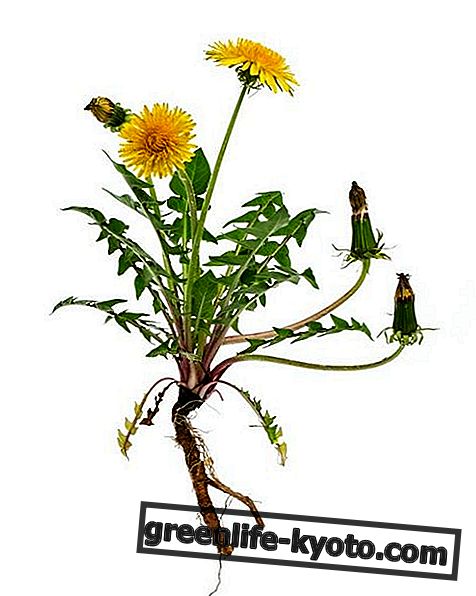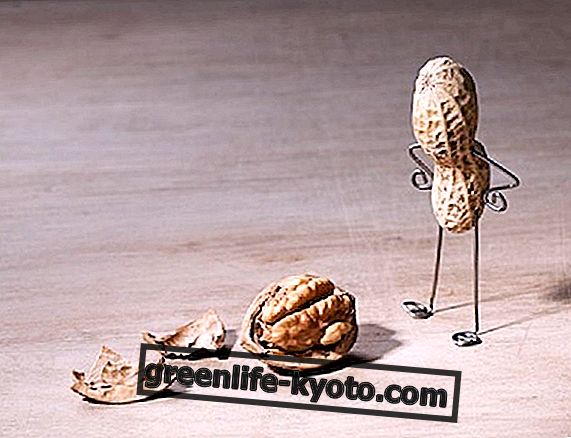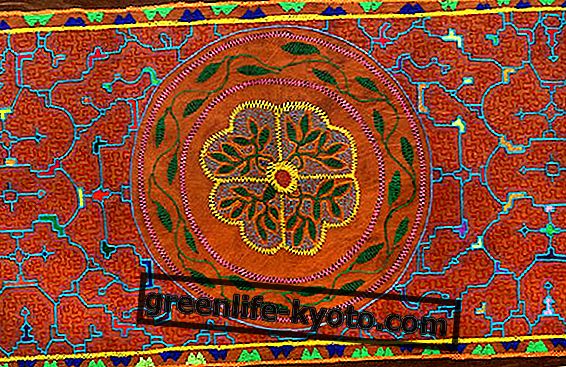What are the properties of dandelion or dandelion? When to use and how? What are the side effects and contraindications?
The dandelion ( Taraxacum officinale ) is a plant belonging to the Asteraceae family . With its purifying and anti-inflammatory properties, it is an excellent ally in the treatment of liver-related diseases . Let's find out better.
>
>
>
>
>
>
>

Properties of the dandelion
The dandelion root has purifying properties, as it stimulates the biliary, hepatic and renal function, ie it activates the excretory organs (liver kidney skin) used for the transformation of toxins, in the most suitable form for their elimination (feces, urine, sweat). The main components of its phytocomplex are triterpene alcohols (tarasserol); sterols ; vitamins (A, B, C, D); inulin, bitter principles (tarassacina), mineral salts that give the plant bitter-tonic and digestive properties .
These substances also have purifying, anti-inflammatory and detoxifying properties against the liver: they promote the elimination of waste (sugars, triglycerides, cholesterol and uric acids) making the dandelion a hepatoprotective plant, indicated in cases of liver failure, jaundice and gallstones.
It also stimulates the secretions of all the glands of the gastrointestinal system (saliva, gastric, pancreatic, intestinal juices) and the muscles of the digestive tract producing a secondary laxative action .
In the peasant tradition the dandelion is also known as " piscialetto ", a name that suggests the diuretic properties of the drug. Of these properties the flavonoids and in part the potassium salts are responsible, which stimulate diuresis favoring the elimination of excess liquids. Its intake is therefore indicated in case of water retention, cellulite and hypertension.
Finally, the dandelion is able to reactivate the immunological function and enhance the immune response of the lymphatic system. The nitric oxide (NO) contained in it is involved in the processes of regulation and defense of the immune system: it acts as an intracellular messenger, stimulating the phagocytic activity of the cells.
Dandelion is one of the natural remedies against water retention. Discover the others

Method of use
- Dry extract (500-750 mg) in capsules or tablets administered 2 times a day between meals
- Dandelion mother tincture, 50 drops in a little water three times a day before or after meals.
- Herbal tea: 1- 2 teaspoons per cup to be taken morning and evening
Contraindications
The dandelion is contraindicated in case of gastritis, ulcer and biliary calculosis, since motility could be called for. Interactions with any drugs such as diuretics have been recorded.
Dandelion can have some side effects and present hypotension phenomena in predisposed subjects. It can interact with NSAIDs (non-steroidal anti-inflammatory drugs), whoever undergoes this type of therapy always consults their doctor in any case before any other integration.
Description of the plant
Perennial herbaceous plant, between 3 and 9 cm tall. It has a large taproot root from which develops, at ground level, a basal rosette of leaves with short and underground stems.
The leaves are simple, oblong, lanceolate and lobed, with a toothed margin without stipules. The stem, which later evolves from the leaves, is a hollow, glabrous and milky scape, bearing a golden-yellow inflorescence at the apex, known as the flower head.
The flower head is formed by two rows of membranous bracts, bent backwards and serving as a calyx, enclosing the receptacle, on which are inserted hundreds of small flowers, called flosculi .
The fruits are achenes, provided with the characteristic pappus: a tuft of white hairs, originated from the modified chalice, which, acting as a parachute, facilitates the dispersion of the seed with the wind, when it detaches from the flower head.
The habitat of the dandelion
Widespread throughout Italy, it grows from the plains to the alpine area up to over 2000 meters, it is found in the meadows, on the edge of the roads and in uncultivated places.
Background
The therapeutic use of this plant was not known in antiquity. In the Middle Ages, according to the Theory of Signatures, having the flower yellow as yellow bile, it began to be used as a liver remedy. And as often happens, scientific evidence has confirmed this theory.
In 1546 the naturalist Bock attributed a diuretic power to the dandelion, while a German pharmacist of the sixteenth century attributed virtues to the plant (that is, capable of rapidly healing wounds).
The dandelion is used in Traditional Chinese Medicine as a purifier capable of purifying heat, eliminating toxins and dissipating nodules, with hepatic tropism (hepatitis) and gastric.
A French saying states that the dandelion " purifies the renal filter and dries the liver sponge ".
A recipe with dandelion
INTERNAL USE
DECOCK: 1 spoon of dandelion roots, 1 cup of water
Pour the chopped root in cold water, light the fire and bring to a boil. Boil a few minutes and turn off the heat. Cover and leave to infuse for 10 min. Filter the infusion and drink it.
READ ALSO
The dandelion among the natural detoxifying supplements for the liver
See other articles on the dandelion:
> The purifying herbal tea with dandelion and turmeric
> The dandelion mother tincture for digestion
> Dandelion herbal tea among purifying herbal teas
> The dandelion among natural products for swollen legs
> The uses of dandelion mother tincture
> Dandelion, how to eat it
> Dandelion and diabetes
Image | Wikimedia | PeriodVitamin
In collaboration with Erboristeria del Pigneto
Video by Deabyday.tv











